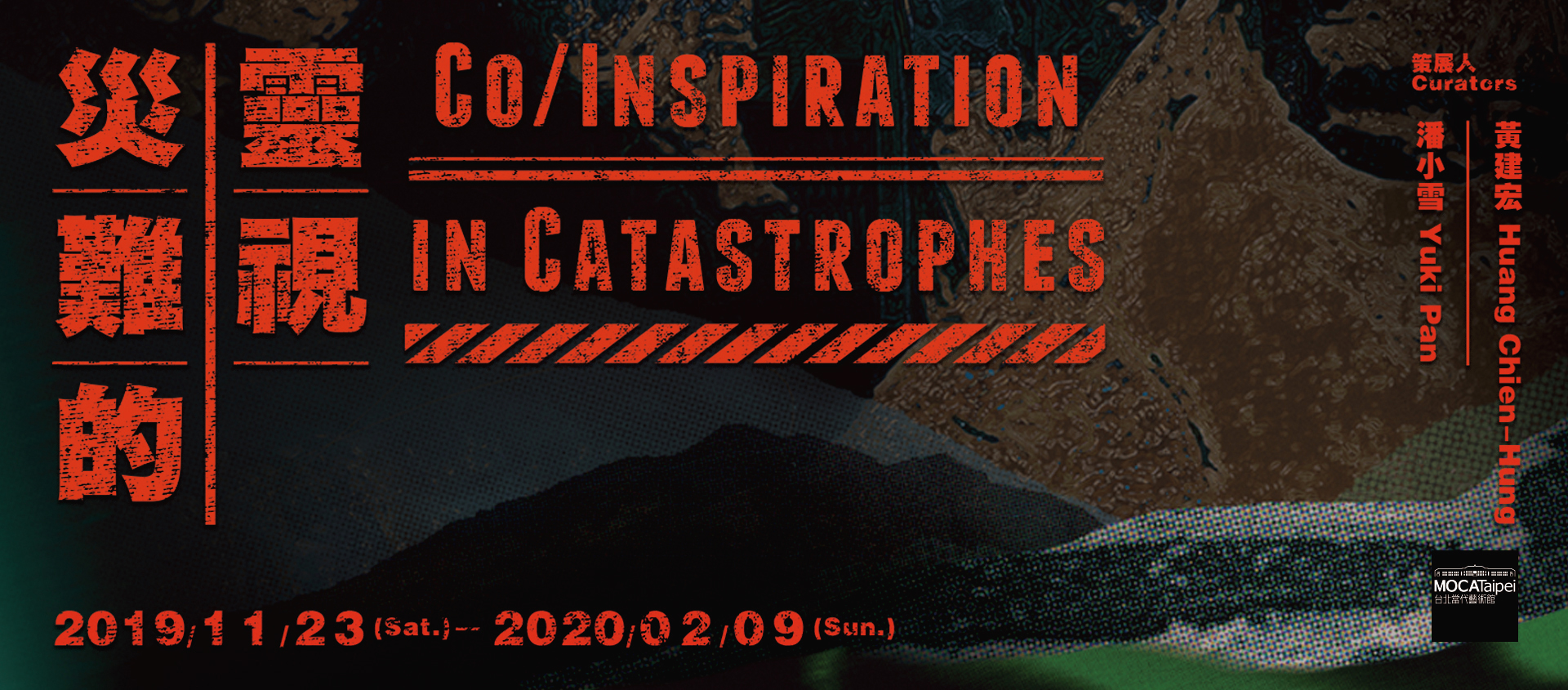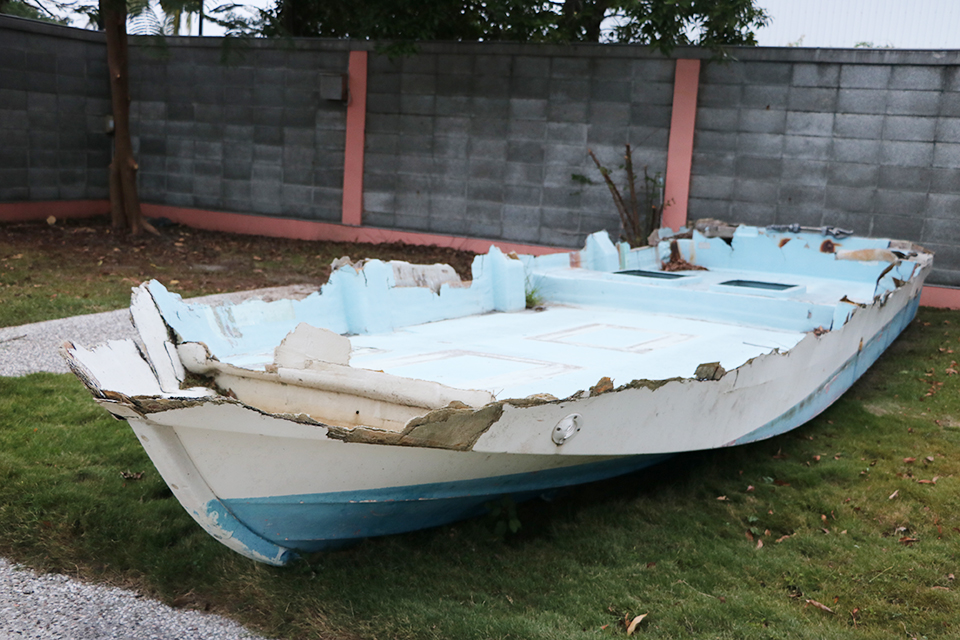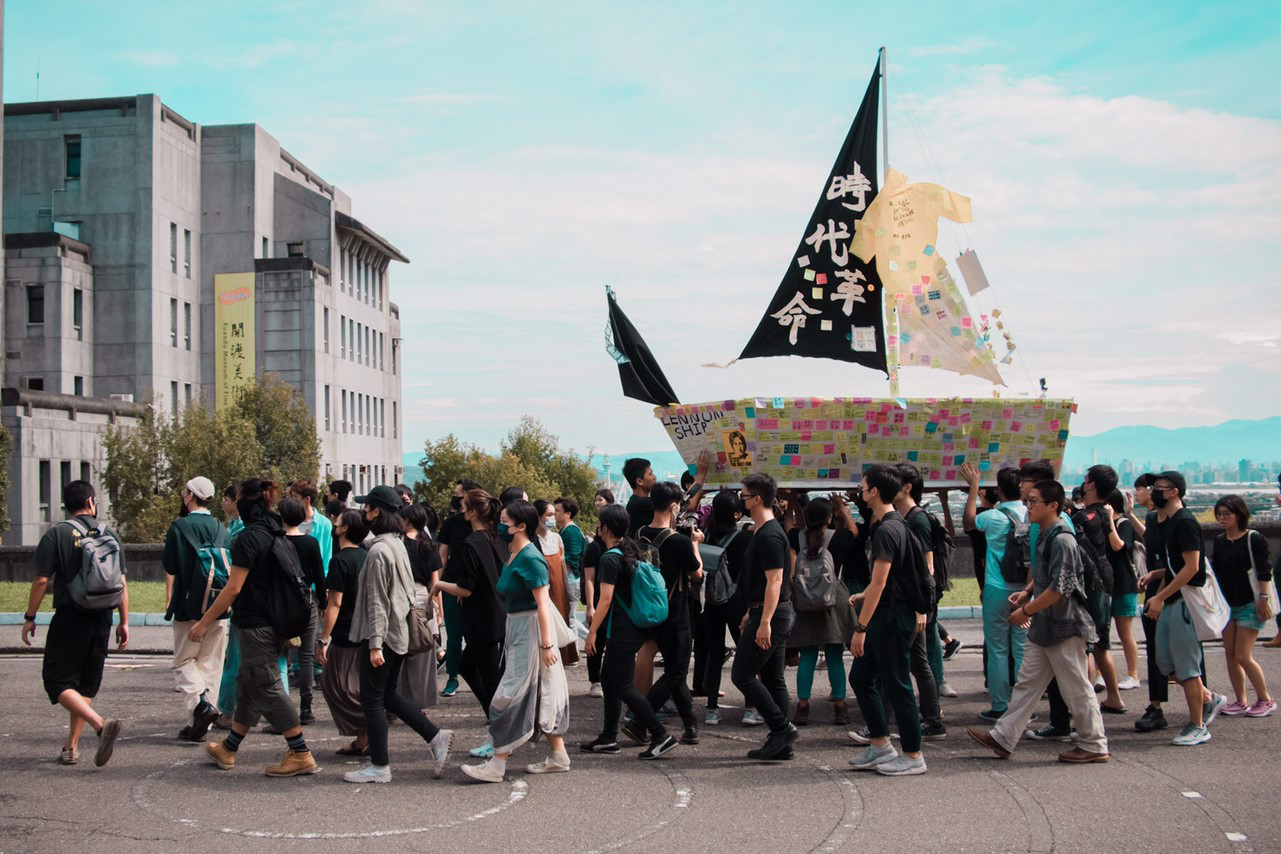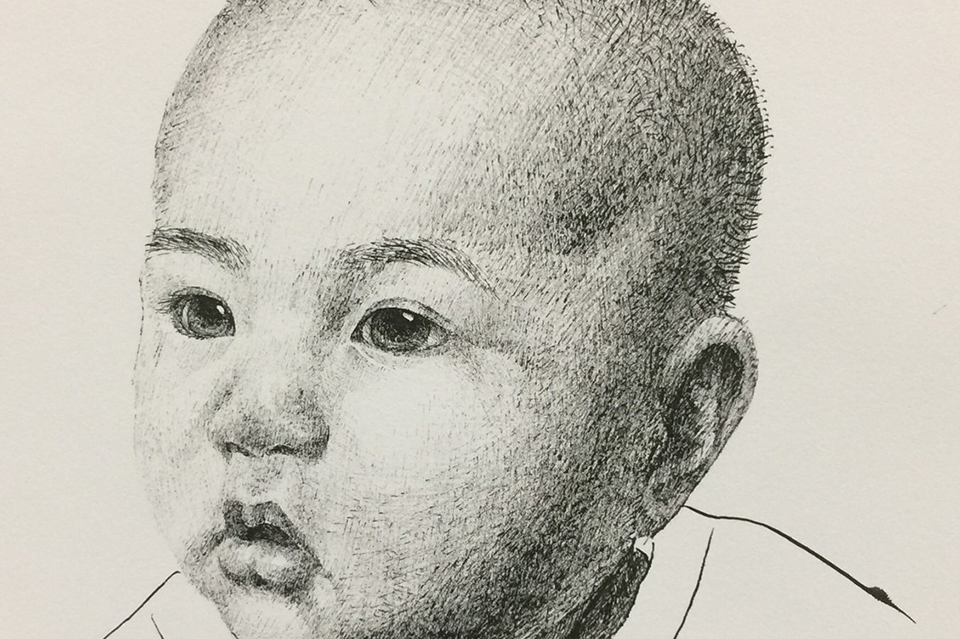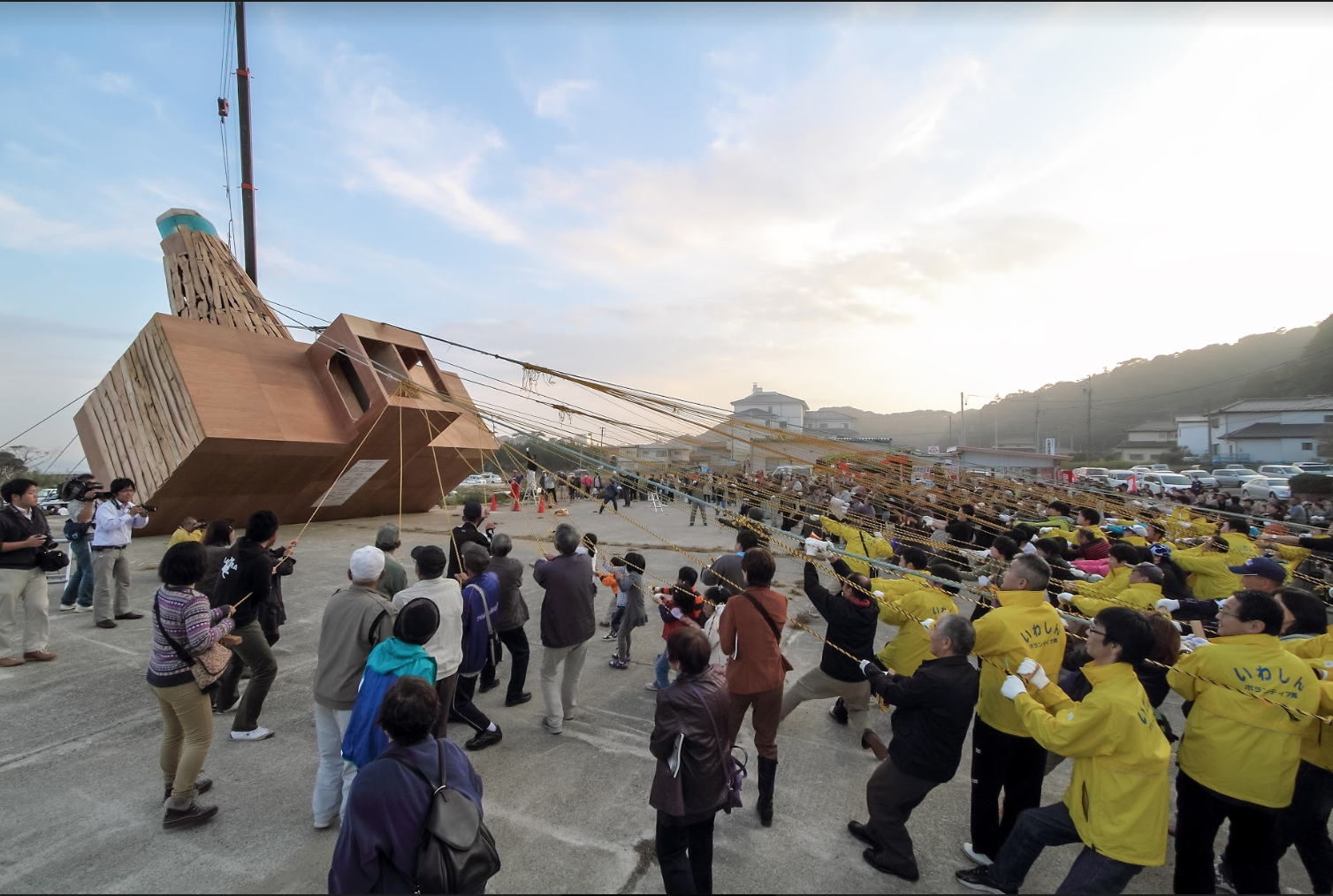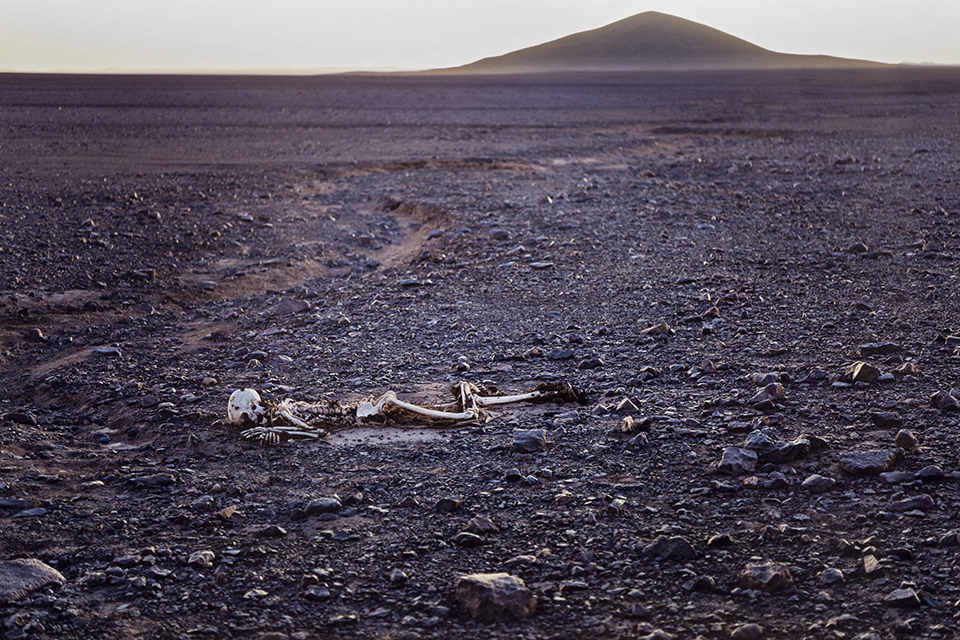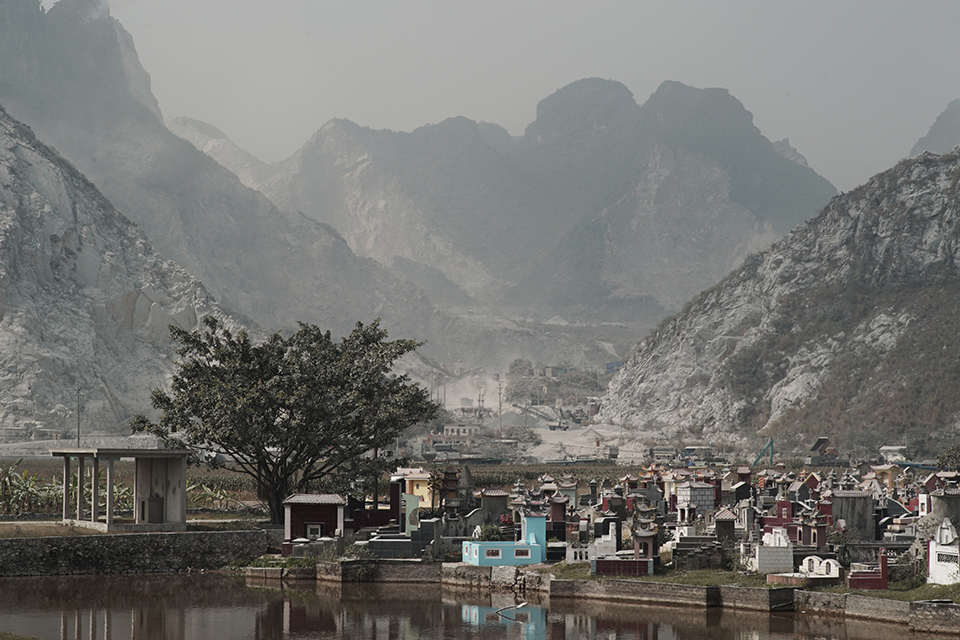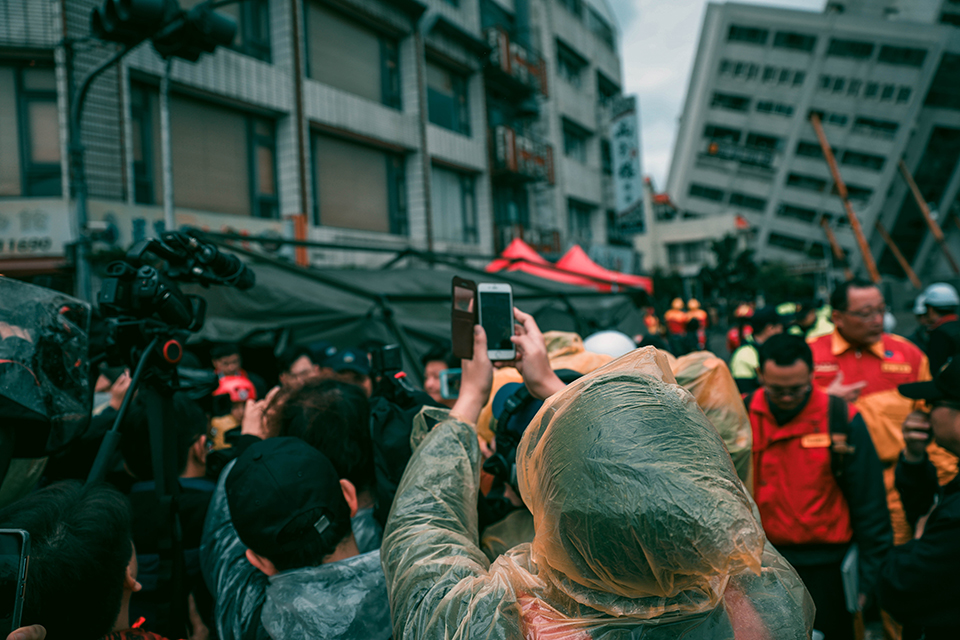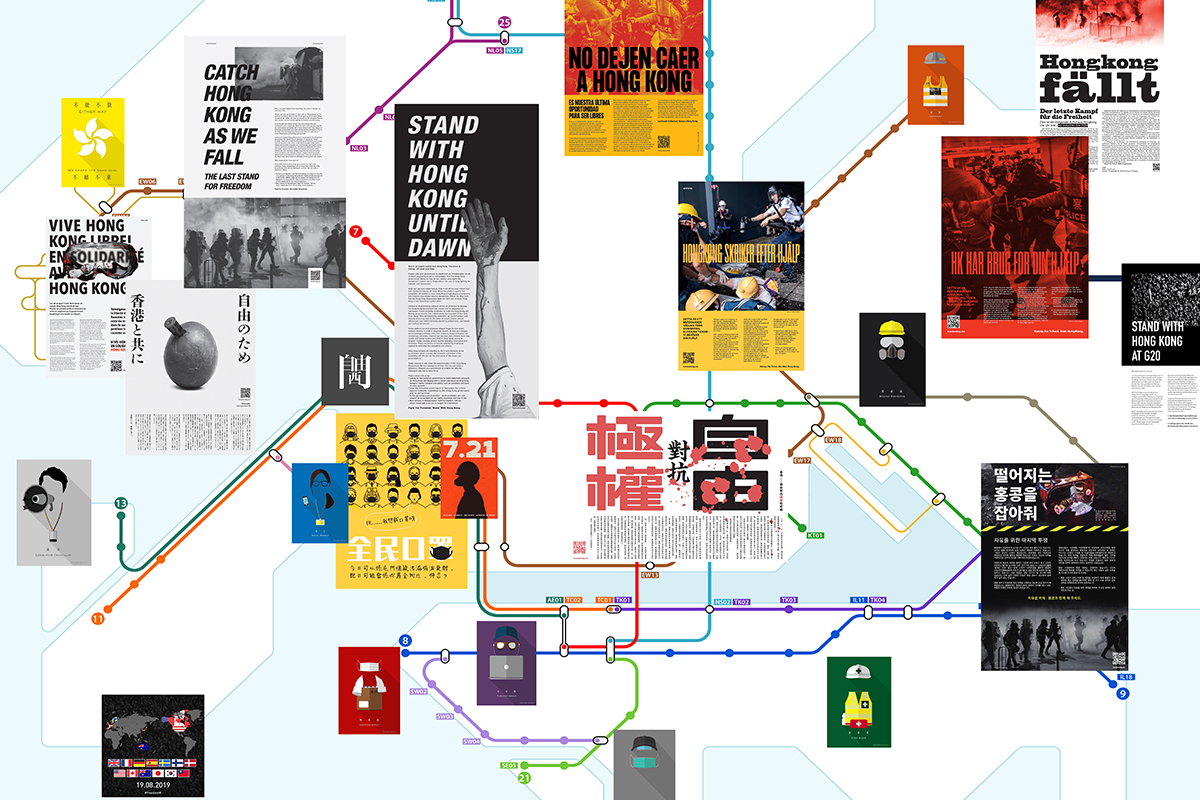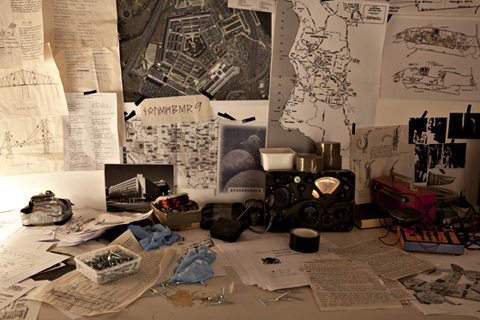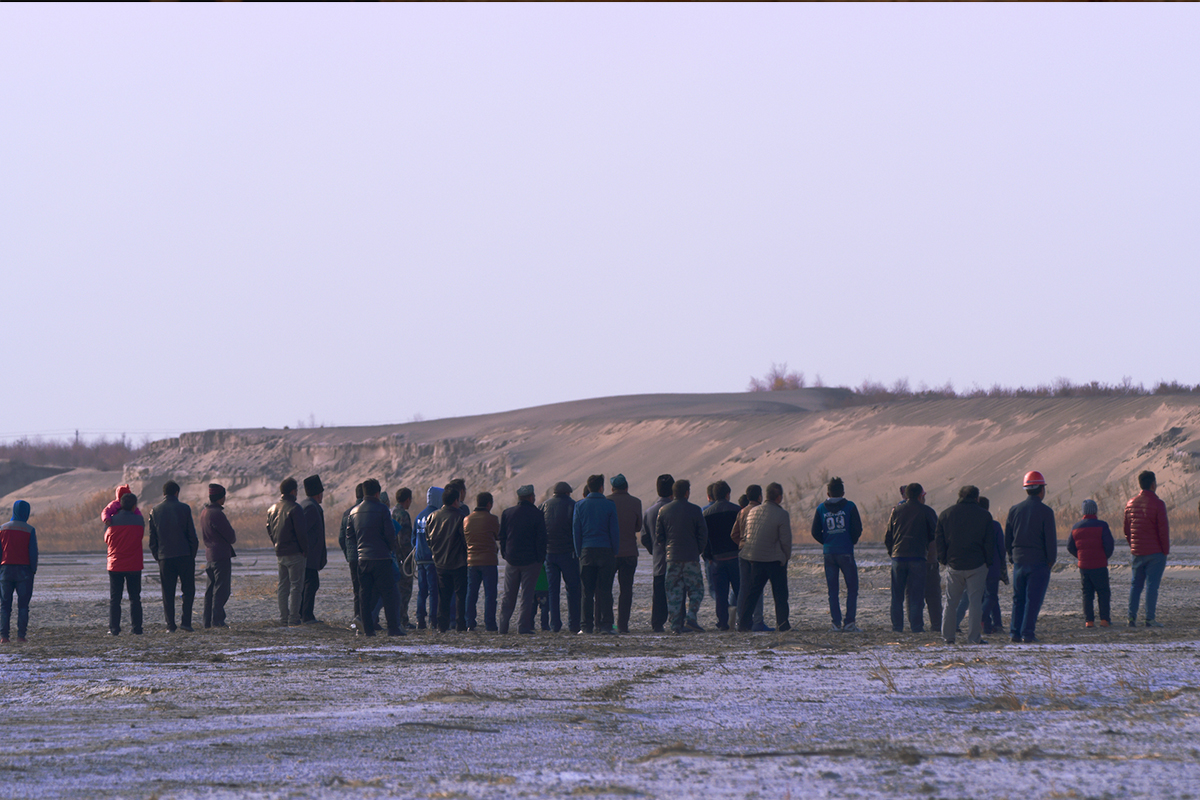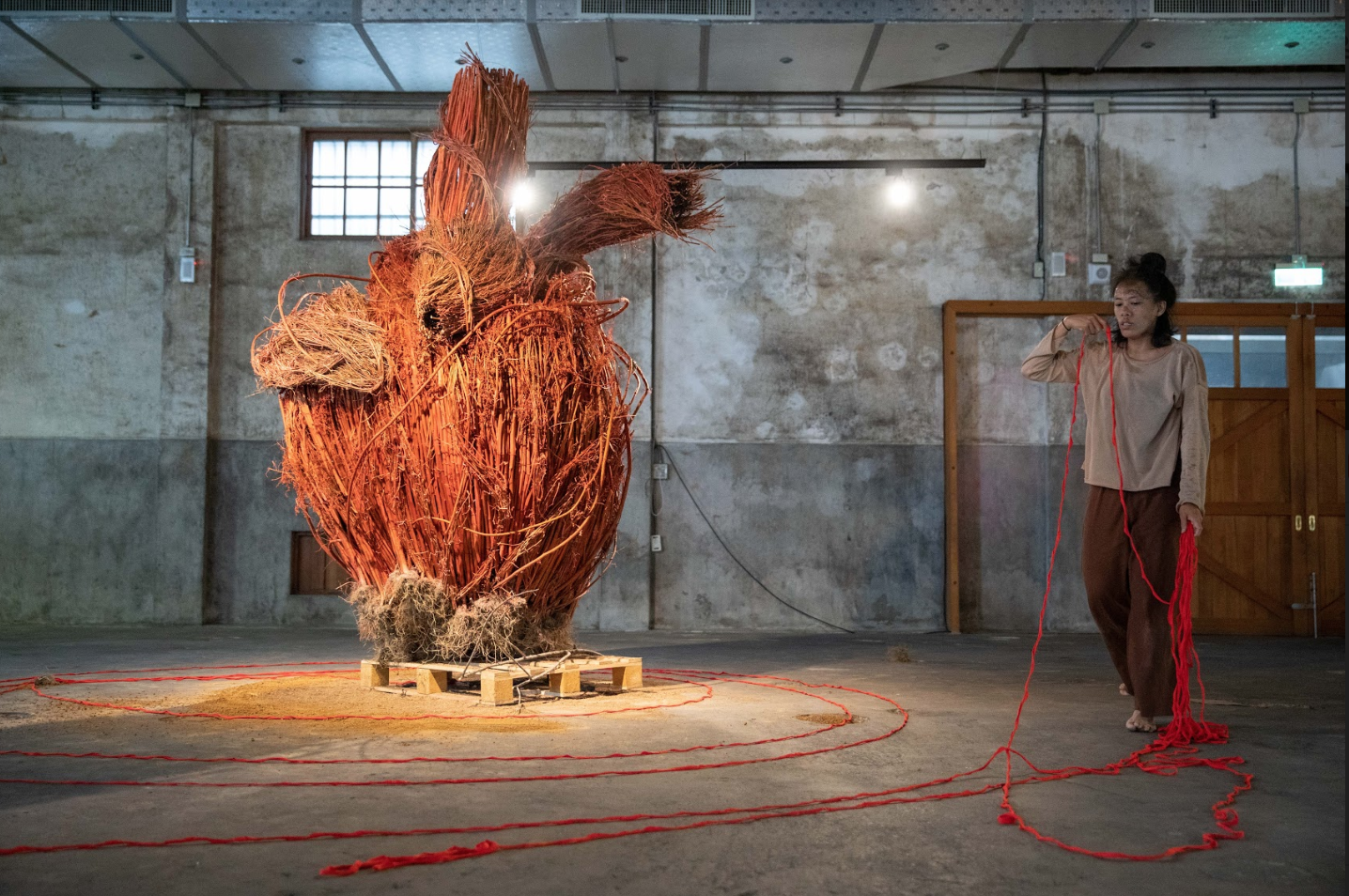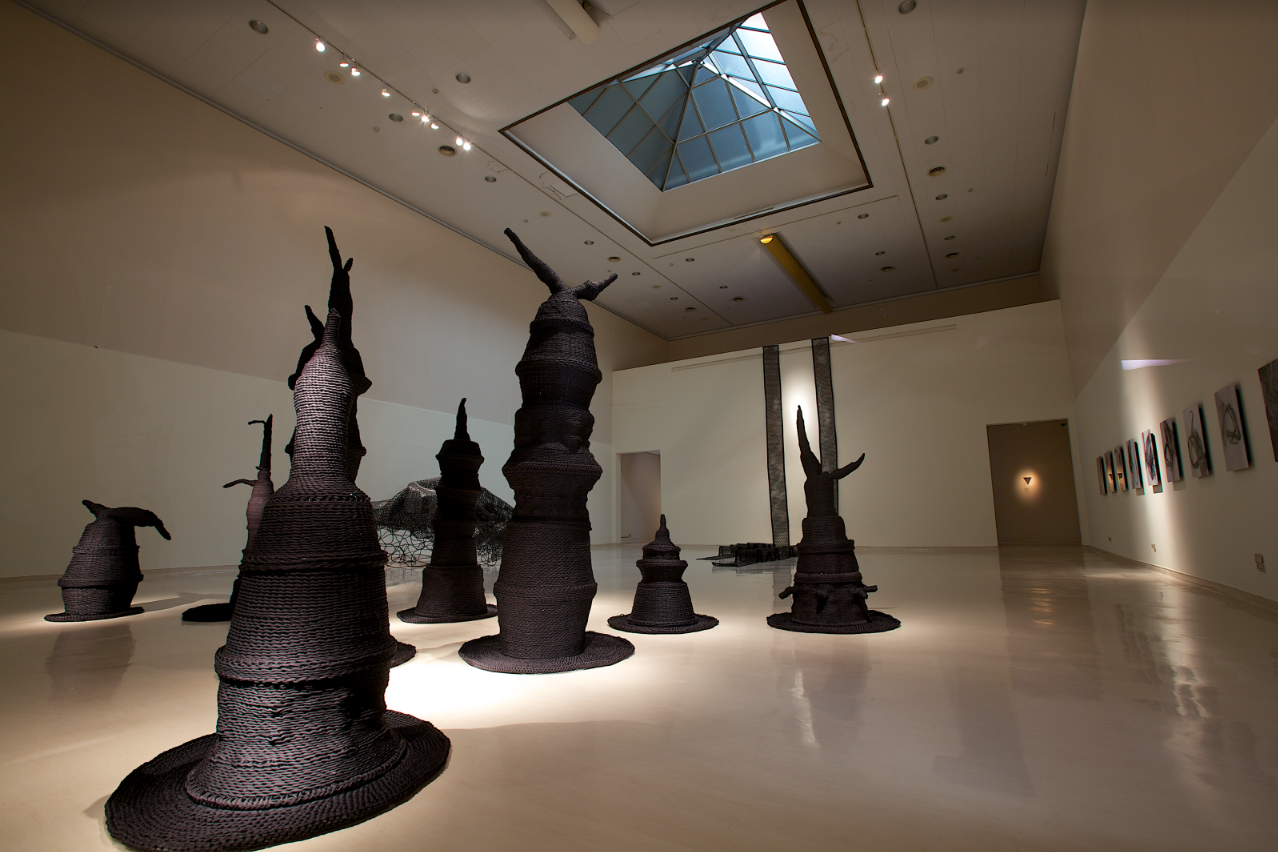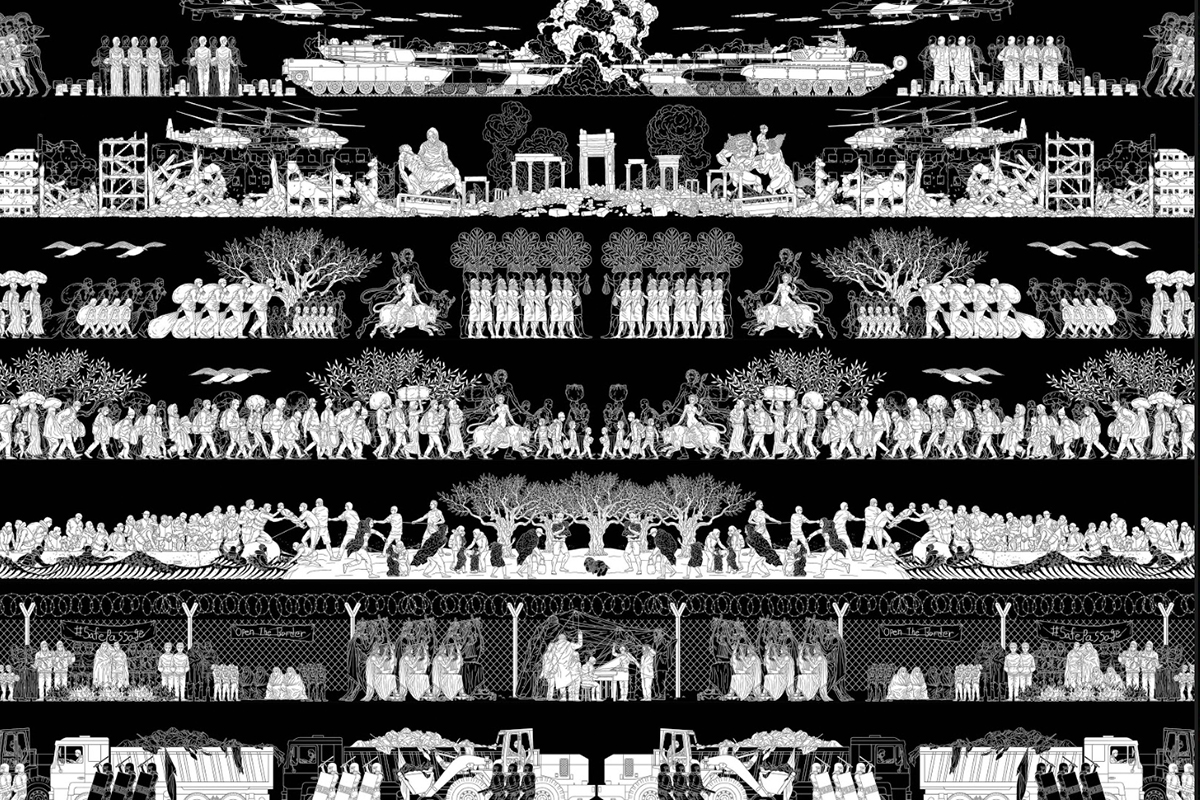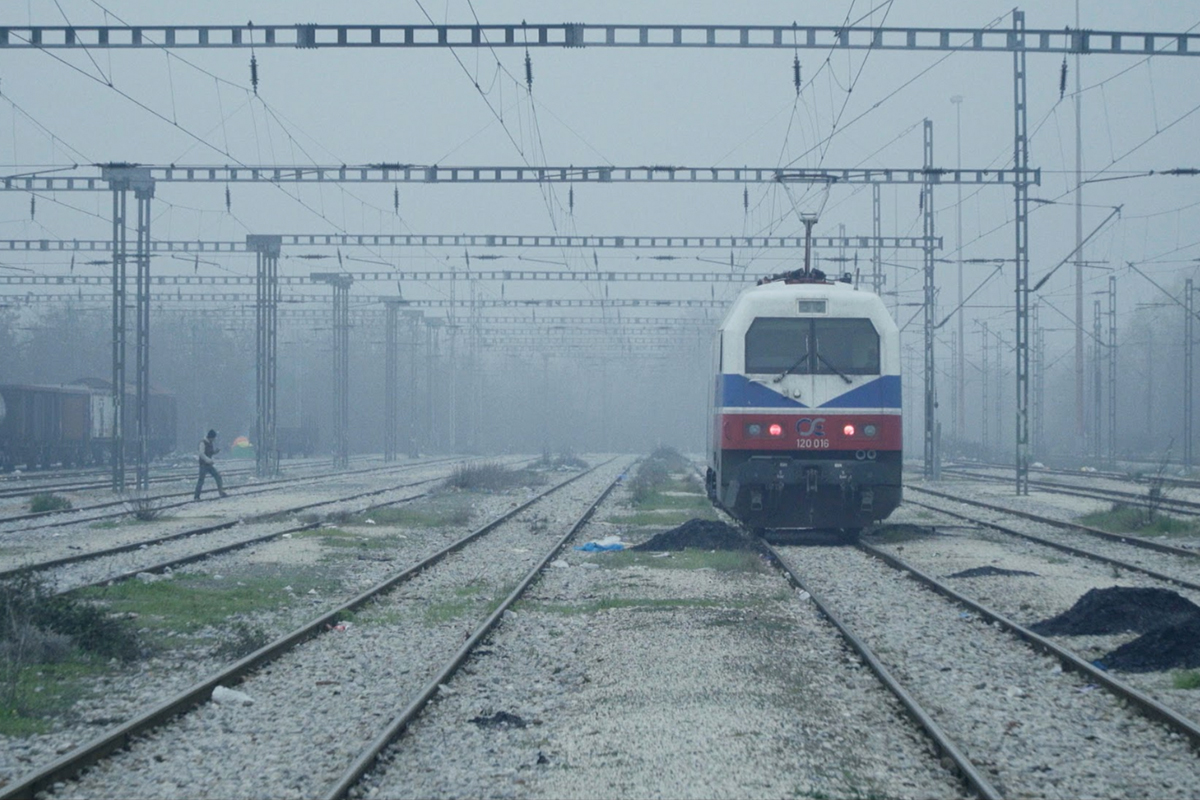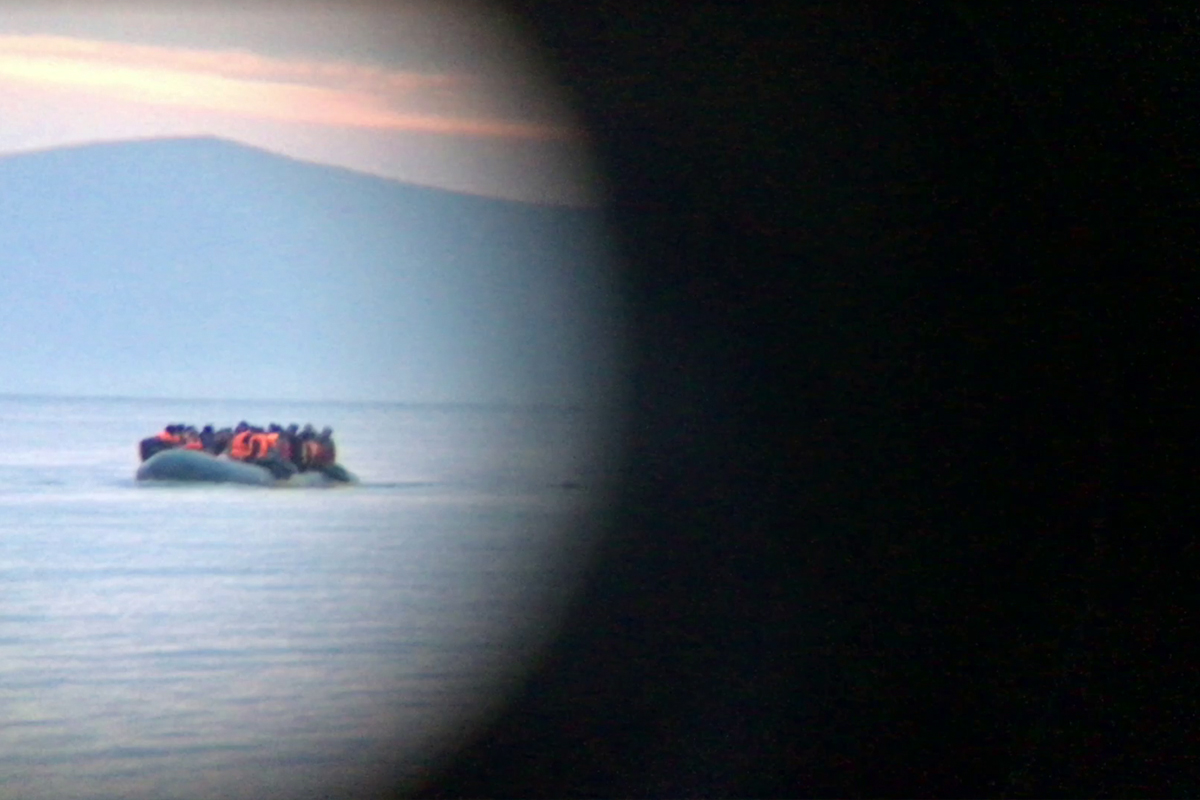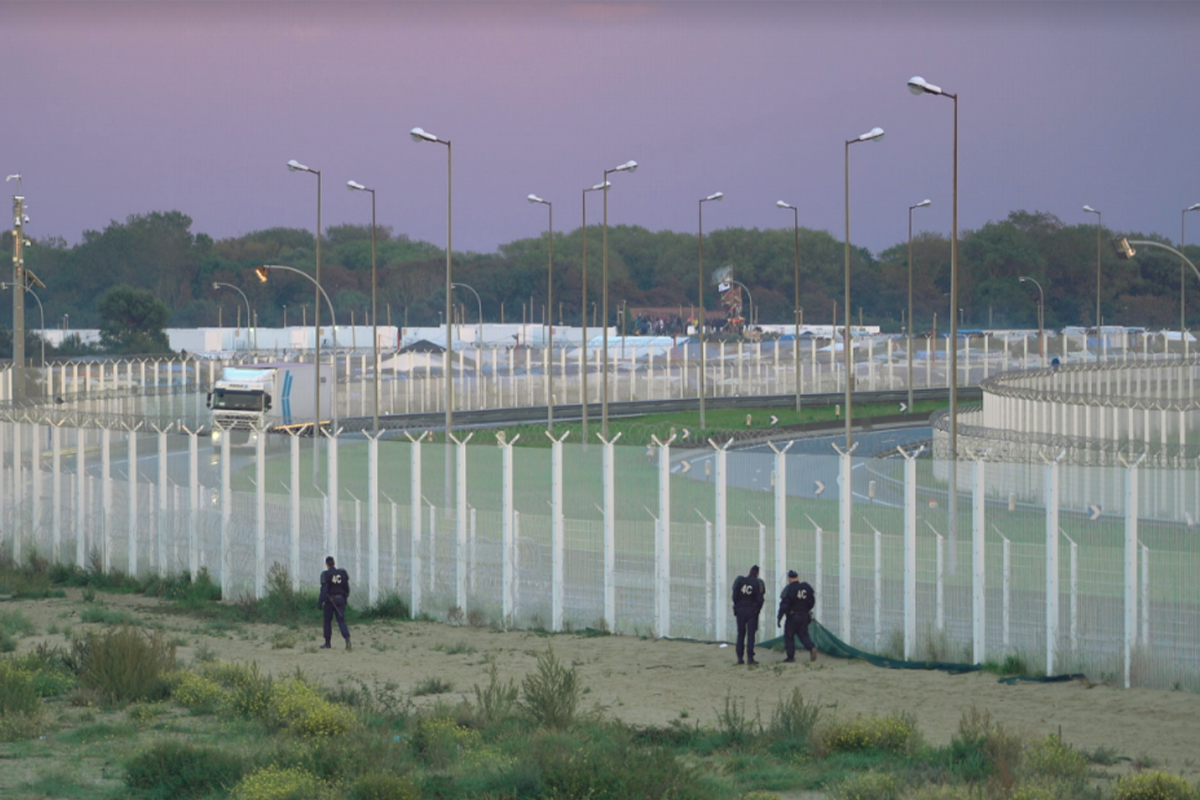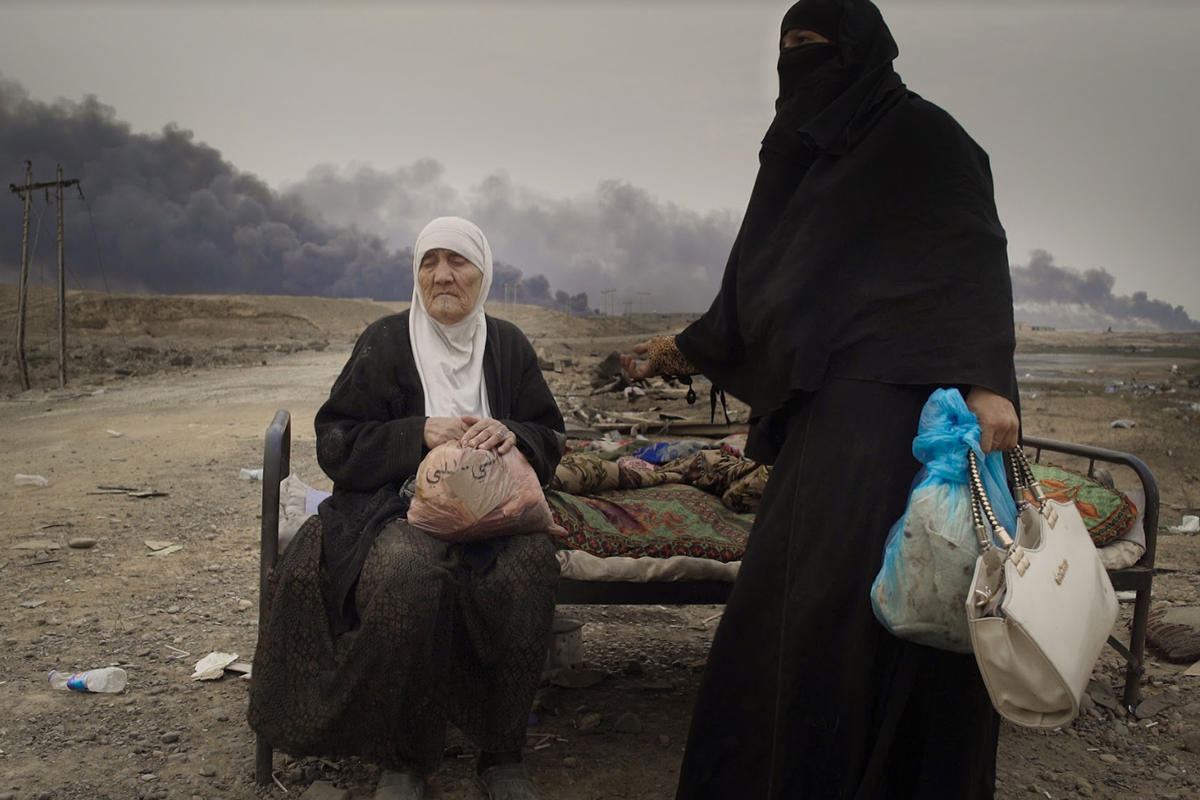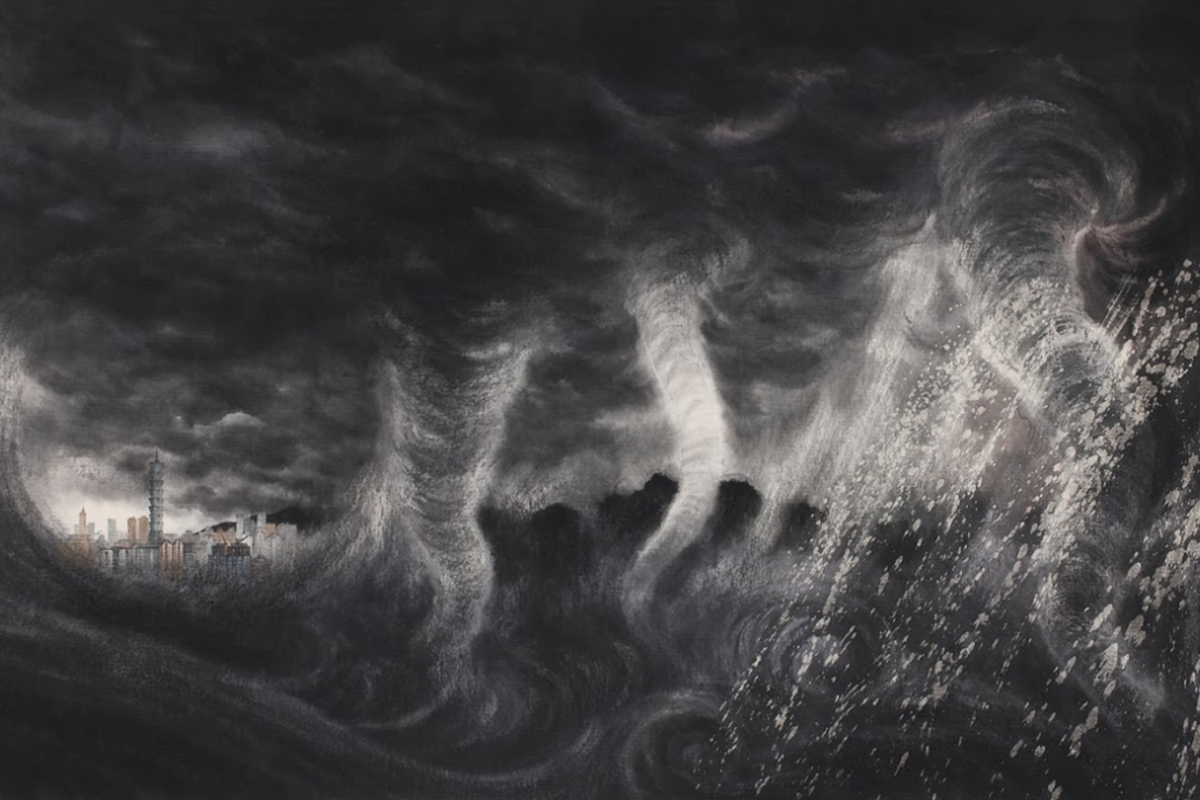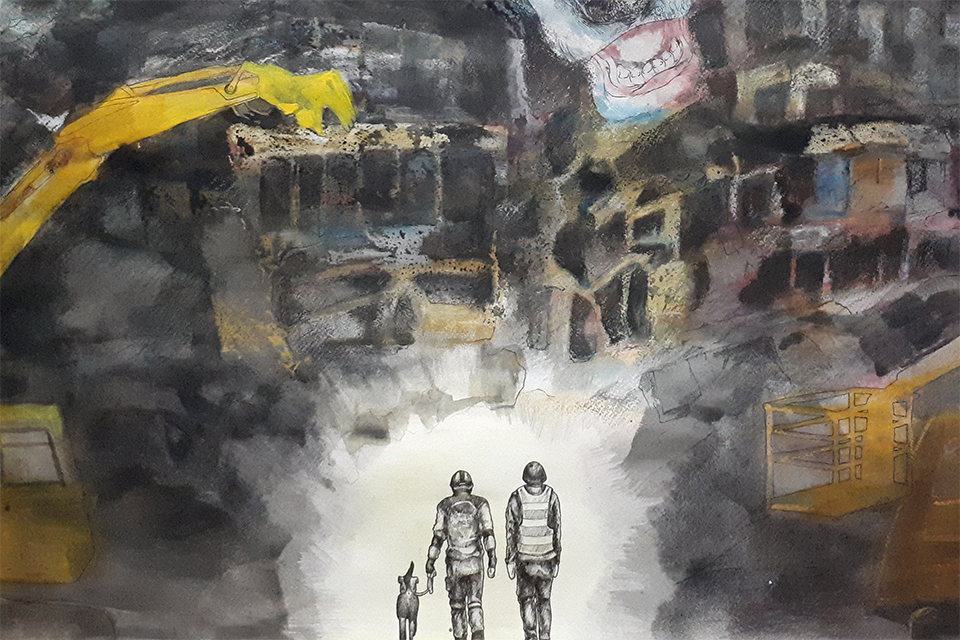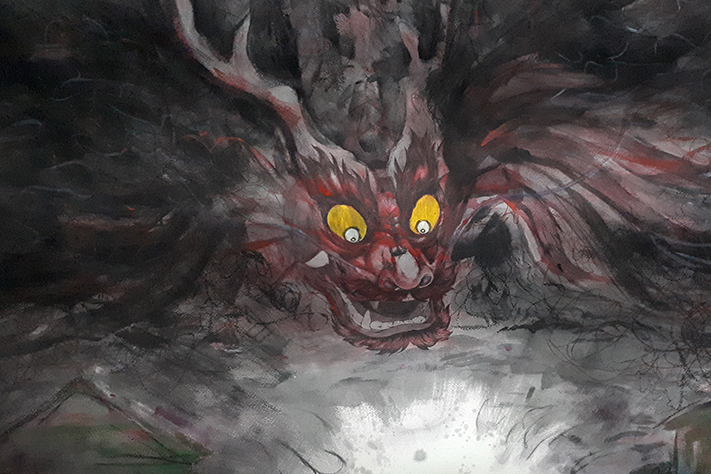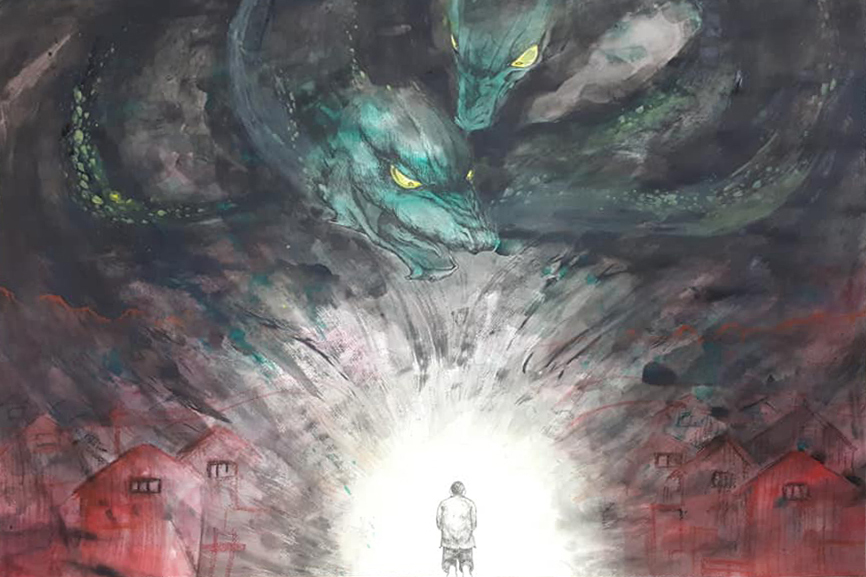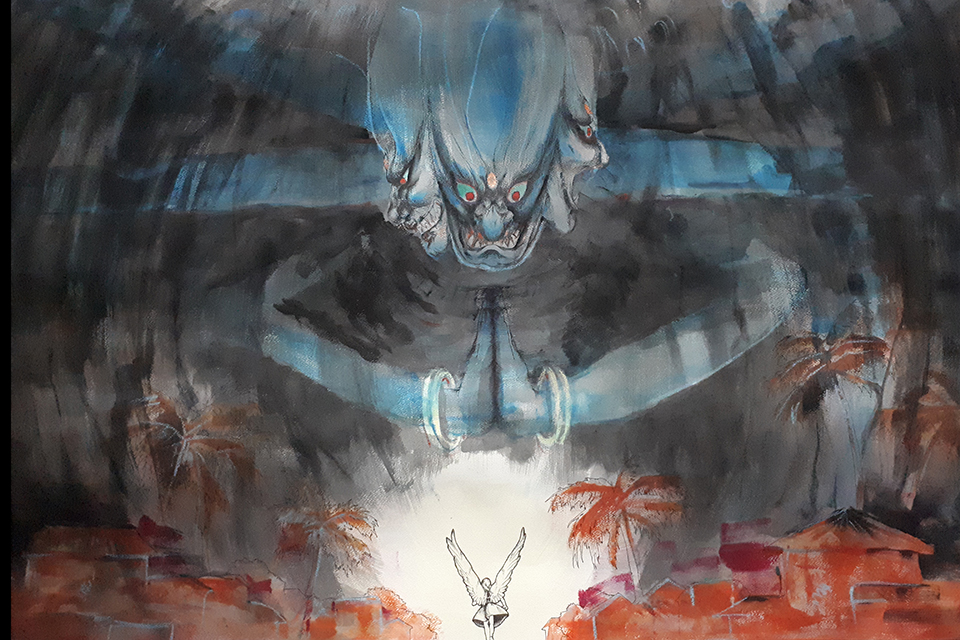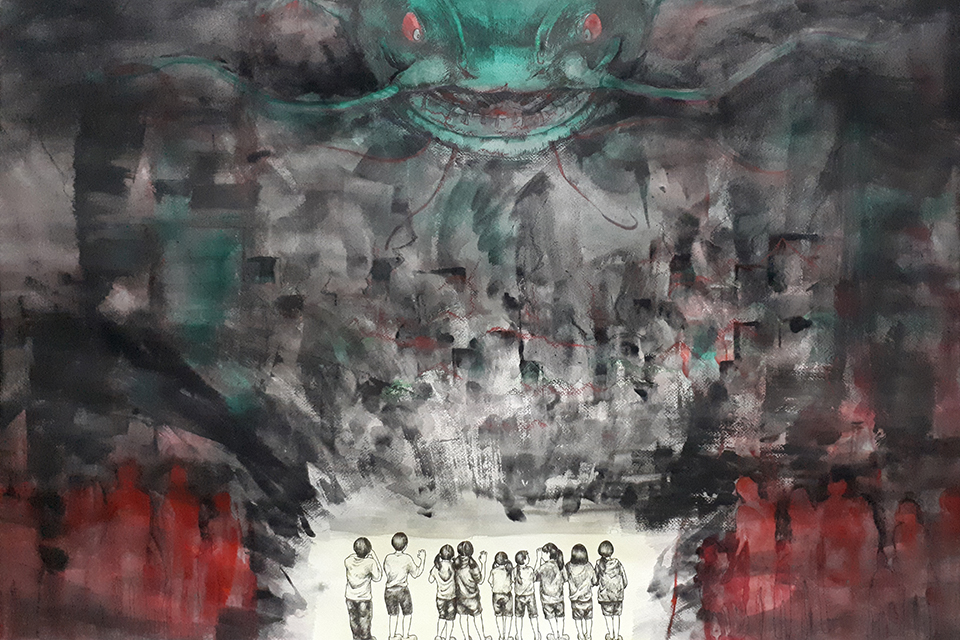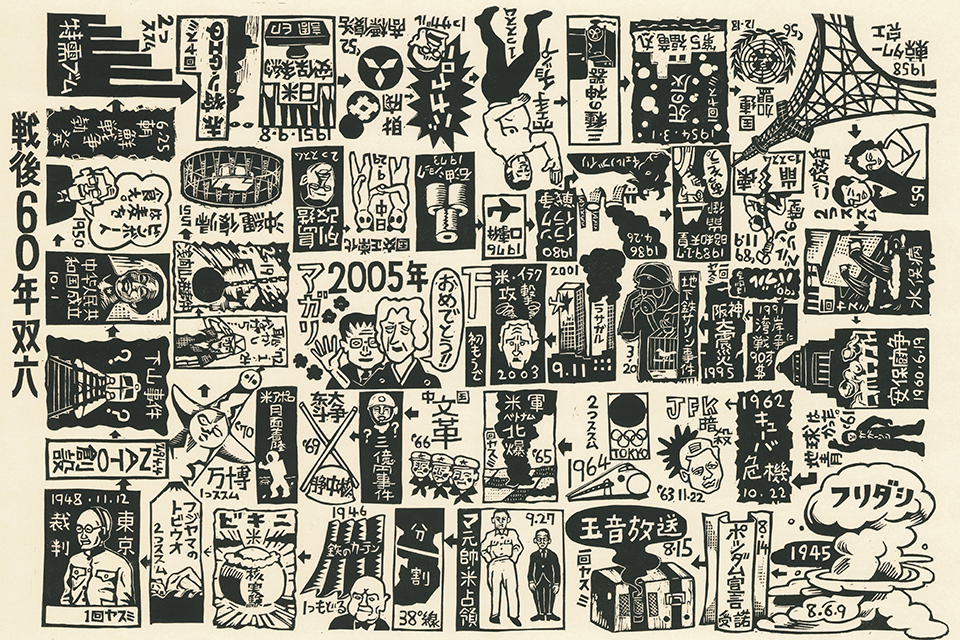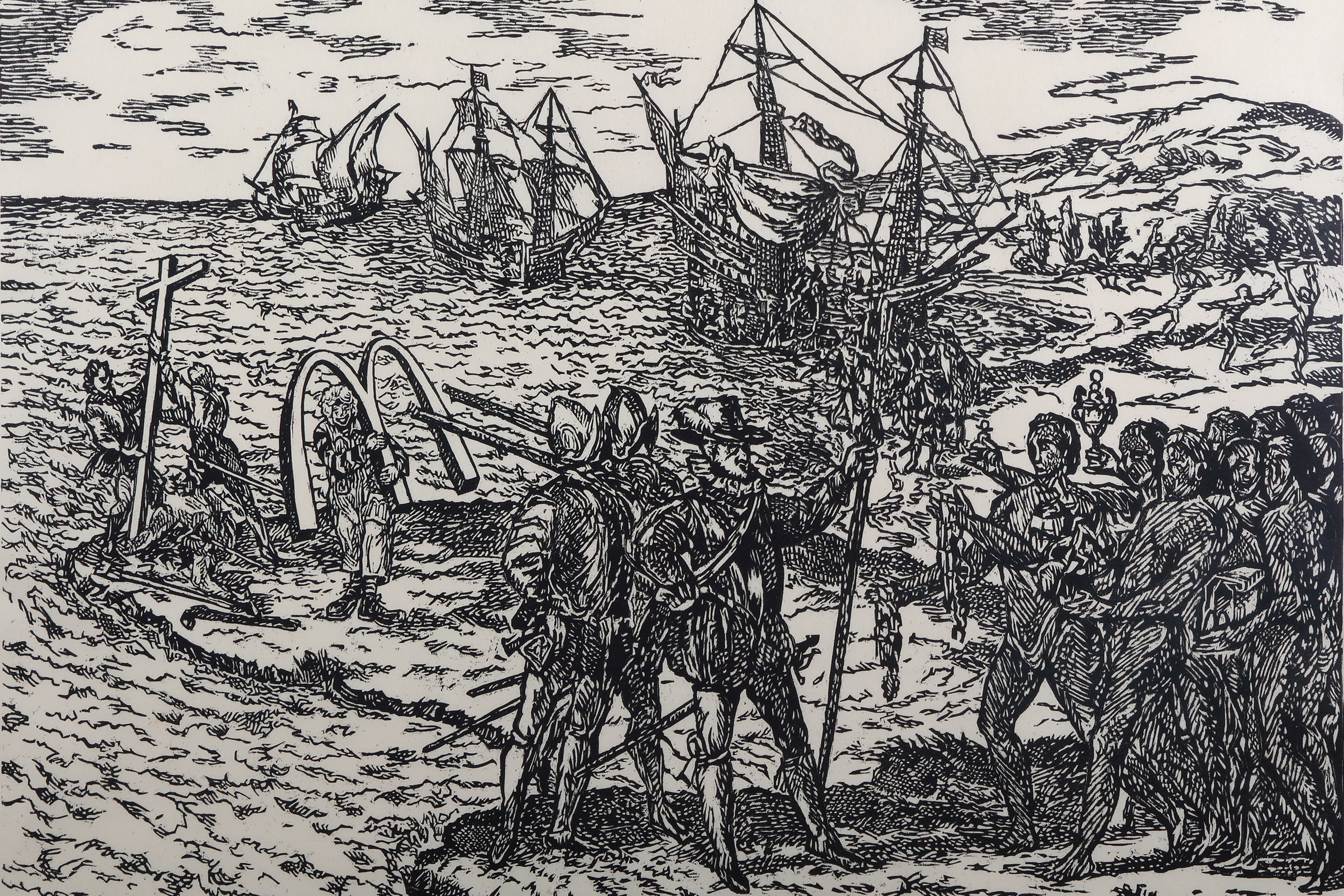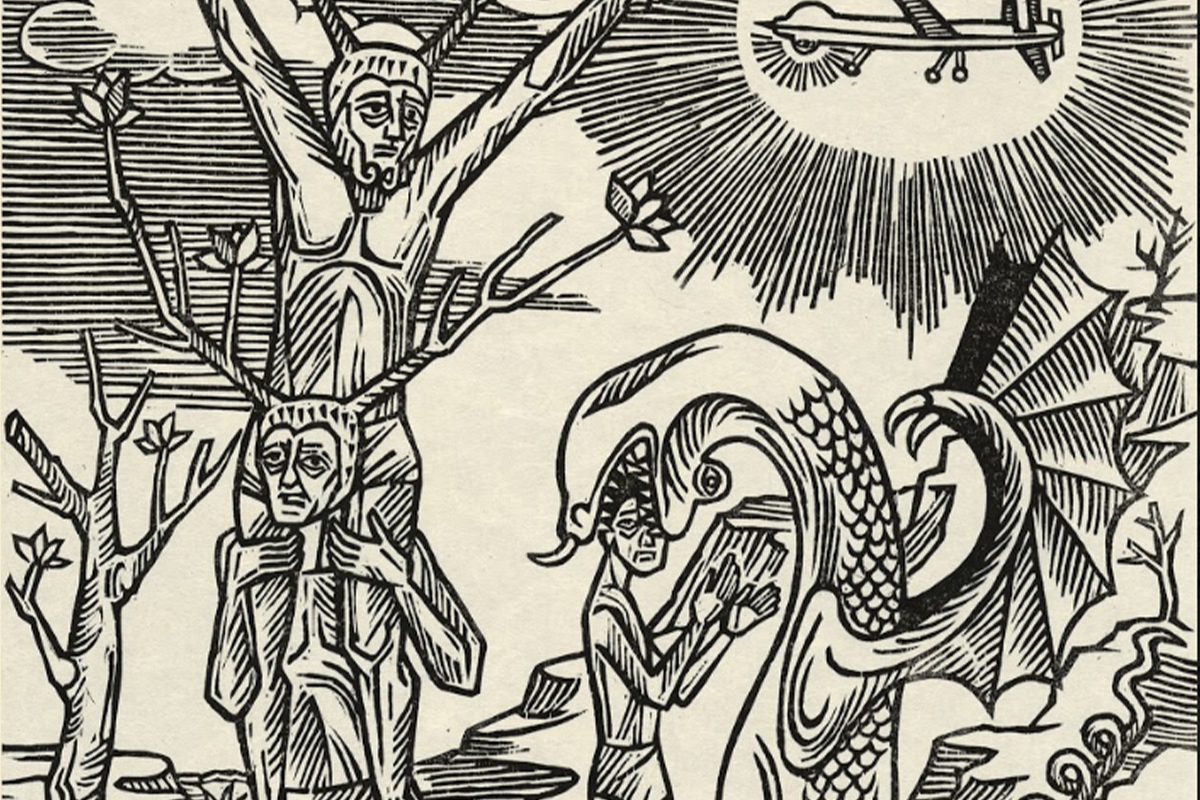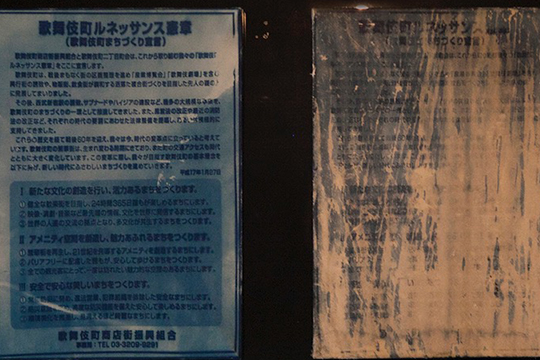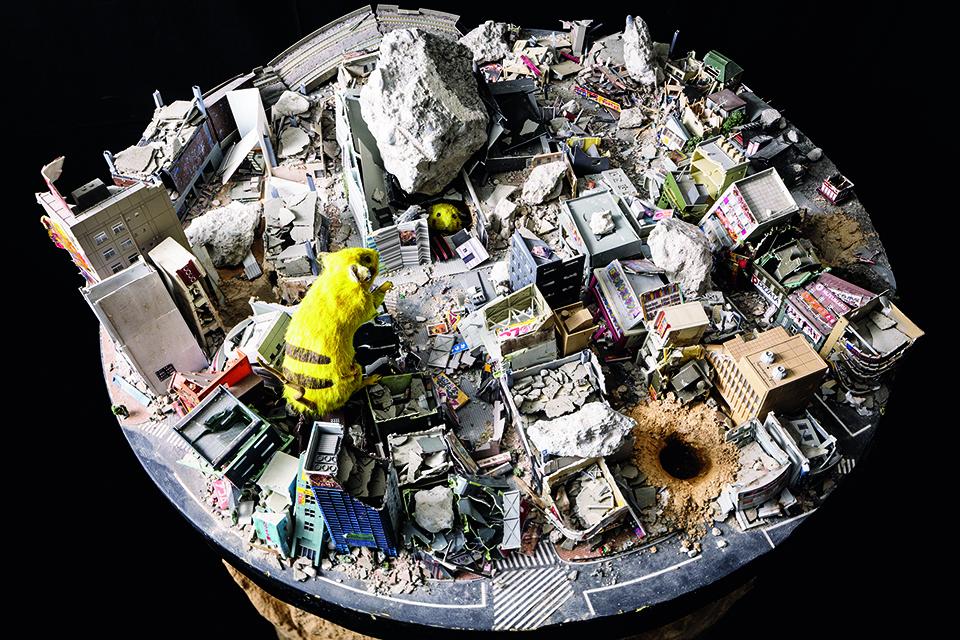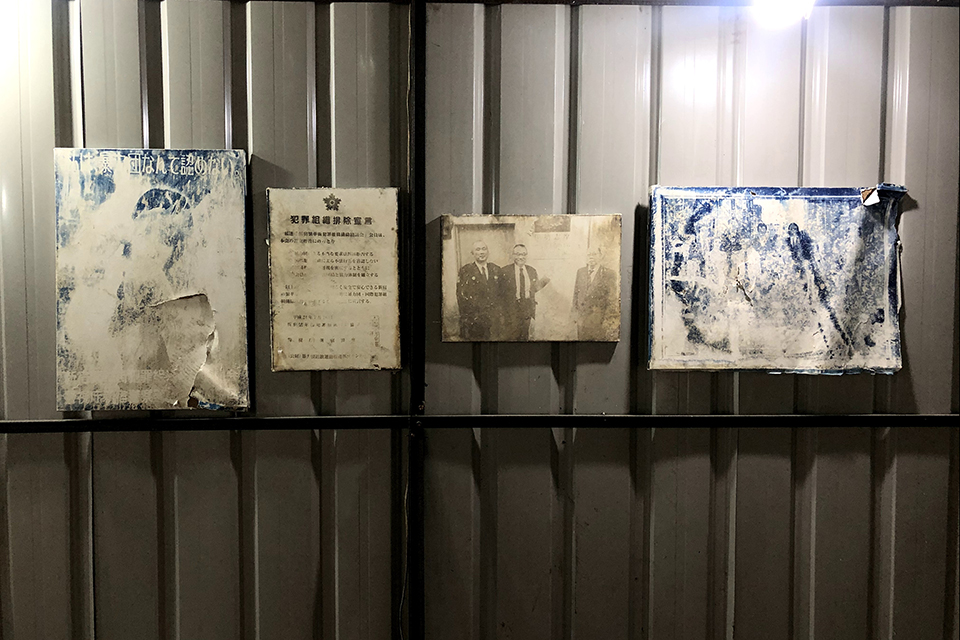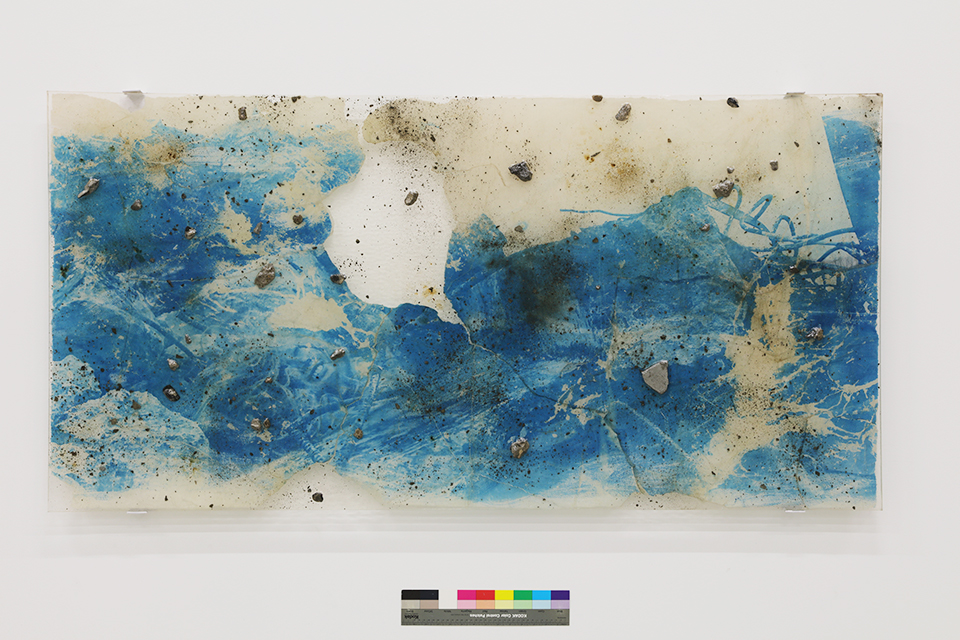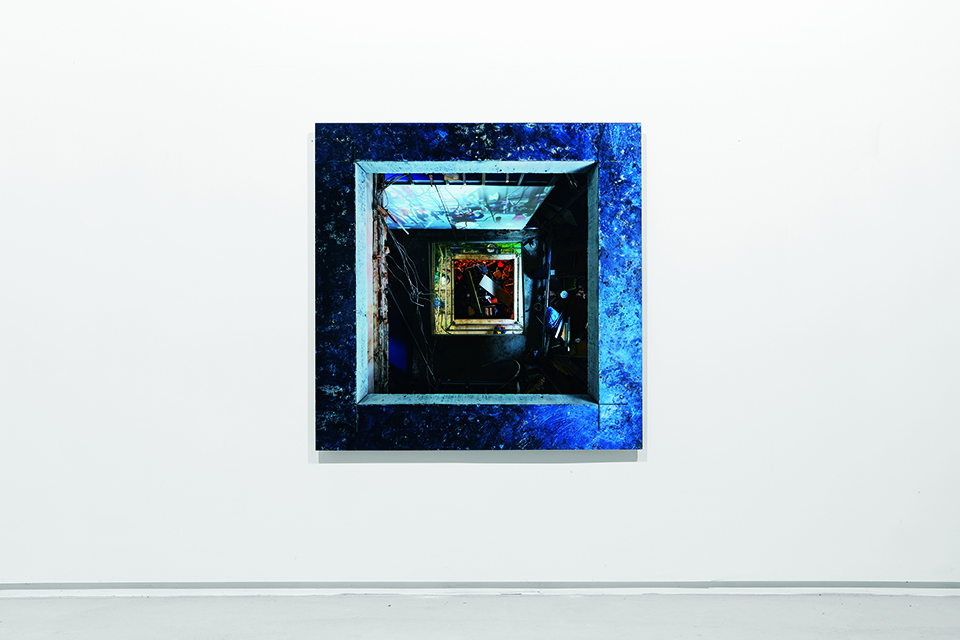Born in Paris, France in 1962, Pierre Huyghe is one of the pioneering and driving forces behind relational aesthetics in the 90s. Huyghe is known for his diverse, intricate presentation of the ecological system, which envelopes an extensive range of life for ms, inanimate things and technologies. He constructs organisms which not only combine biological, technological and fictional elements, but also produce a complex, immersive microcosm with a constantly changing environment, in which humans, animals and non beings learn, evolve and grow. Through the transformative process posited between reality and fiction, he explores the interrelations between the Anthropocene epoch and the natural world. Huyghe's oeuvre has gained international acclaim for its ability to challenge conventional forms of representation and accepted narrative models. He was the recipient of the 2017 Nasher Prize, the 2015 Kurt Schwitters Prize at The Sprengel Museum in Hannover, Germany; the 2013 Roswitha Haftmann Prize in Zurich; the 2010 Smithsonian American Art Museum’s Contemporary Artist Award; the 2002 Hugo Boss Prize; and the Special Jury Prize awarded by the 49th Venice Biennale, in which he represented France.
Described as “the enfant terrible of Japan's art world,” the artist collective Chim↑Pom was founded by six young artists, including Ryuta Ushiro, Yasutaka Hayashi, Ellie,Masataka Okada, Motomu Inaoka and Toshinori Mizuno, in Tokyo in 2005. The practice of Chim↑Pom employs provocative and edgy approaches that shatter the limitations of contemporary art forms and social sensibility, using diverse media and methods ranging from performance, installation, video, painting to curatorial project to explore and expose hidden contradictions, taboos and social issues. Their work not only intuitively responds to the social reality of our time, the realistic context of their work also allows them to constantly question their position as artists, enabling them to actively experiment and surpass existing frameworks of and control over art.Chim↑Pom has received extensive accolades because of their work that intervenes in modern social reality, and has been featured in numerous exhibitions domestically and international, among which are the São Paulo Art Biennial and the Shanghai Biennale in 2012 as well as the Biennale de Lyon and the Asian Art Biennial in 2017.
Born in Japan in 1980, architect Takashi Suo holds an M.Arch from Japan’s Keio University. Before starting his own architectural firm SUO in 2015, he worked at Kazuyo Sejima & Associates and SANAA. In 2017, Suo collaborated with Chim↑Pom and launched Scrap and Build project: Paving the Street, in which he re-designed the architecture for the works and created new public spaces.
Born in Changhua, Taiwan in 1995, Zeng Xiang-Chi is currently having her Master’s Degree in the Department of Arts and Design, National Dong Hwa University. She uses the characteristics of fineliner pen drawings that adds intricate and refined dotting and outlining as well as the lyrical charm of color rendering to portray and explore the contemporary cultural essence of traditional Taoism in Taiwan. For the artist, the invisible world represents a different human society that prompts her exploration. The gods, demons, monsters, ghosts and ghouls in her works are incorporated with her observations of modern environment and social issues, and convey her interpretations of modern alienation and ecology.
Born in Hualien, Taiwan in 1995, Lo Shih-Pin is currently having her Master’s Degree in the Department of Arts and Design, National Dong Hwa University, and is a teacher at Szu-Wei Senior High School in Hualien. Along her creative journey, she has placed an emphasis on observing the world and others, rarely discovering herself. The only way she feels in touch with herself is through the images she creates. Her work visualizes the phenomena and things she observes, in which the dilemmas informed by sorrow and joy embedded in the realities or extreme situations from her observation enable her to understand the world and elevate herself.
TNUA Concern Group for HK Anti-Extradition Bill comprises mainly of Hong Kong students at Taipei National University of the Arts, who very much care about the turmoil in their hometown despite where they are and hope to support their comrades in Hong Kong with actions. They believe that art carries the power to transform human thinking and propel local development in contemporary society, and can even prompt social reform. Therefore, they have employed a wide range of art forms, such as performance, installation, visual art, etc., to communicate their ideas on campus, in streets and online. They specialize in depicting events in a humorous way, using sarcastic, ironic means to convert their thoughts into messages that are easier for people to digest and accept, and by doing so, bringing Taiwanese people’s and even the international audience’s attention to the social movement taking place in Hong Kong.
Born in Tokyo, Japan in 1972, Sachiko Kazama has adored ukiyo-e since she was young. She graduated from the Department of Printmaking, Musashino Art University in 1996. Her artistic style is deeply influenced by modernist prints from the Taisho Era, and her work adopts a formal language that integrates woodcut prints and cartoon-like figures to reflect current events, phenomena and their origins, through which she re-examines and discusses the past while posing her question by asking, “is history authentic?” By doing so, she incorporates extensive literature studies, field visits and research about historical context to connect the past and the present and create collage-like narratives comprised of fictional and realistic elements to highlight the historical absurdities. According to the artist, “uncovering the historical memories that have faded and envisioning the future from a corner of a peaceful city have become my creative method.” Her objective is not to create any political impact or alteration, but rather cultivate the audience’s critical thinking, using art as her medium. Kazama was the recipient of the Superior Prize in the 9th Taro Okamoto Award for Contemporary Art in 2006 and the 8th Tradition Créatrice Art Award presented by the Japan Arts Foundation in 2016.
Tuan Mami was born in 1981, and graduated from Vietnam University of Fine Arts in 2006. His multidisciplinary practice spans across various new media and methods of expression, including video, installation, performance and conceptual art, as he employs creative approaches from anthropology and sociology to conduct deep thinking and meditative experimentation, with which he explores a wide range of boundary-related topics. His work critiques the regressive state of the society through specific sites and the concept of reconstruction while discussing the complex relationship between individuals and society as well as human needs and natural resources. He co-founded MAC-Hanoi in 2012, Nha San Collective in 2013, and then Á Space 2018. He was also Visiting Faculty at the San Francisco Art Institute in 2013.
Seediq artist Ikong Hacii was born in Hualien’s Wanrong Township, Taiwan in 1984, and graduated from the Western Painting Division, Department of Fine Art, National Normal University. She is currently having her Master’s Degree in the Department of Arts and Design, National Dong Hwa University and is a junior high school art teacher. Her art practice mainly focuses on landscape watercolor and dip pen portrait drawing, which feature her own living environment and the traditional life in indigenous villages that have been disappearing. She uses her work to explore the scenes of the present and explore the relationship between her own people and the indigenous culture. The subject matters in her work, be it people, things, objects or scenes, are integrated with her personal understanding and constructed with sentiments and feelings, which is similar to the village elders’ weaving, as each crossing of the vertical and horizontal threads is informed by individual life experience.
Tsubasa Kato was born in Japan’s Saitama Prefecture in 1984, and received his MFA from Tokyo University of the Arts in 2010. From 2015 to 2017, he was awarded the grant of the Program of Overseas Study for Upcoming Artists by Japan’s Agency for Cultural Affairs, and was a visiting research scholar to the University of Washington in Seattle, USA. Since 2007, he has been known for his art project, Pull and Raise, which adopts the form of performance art with audience participation to reflect the deeply connected social consciousness between individuals and the collective and its value. The project also emphasizes on re-establishing the relationships between people while attempting to mitigate the impact of ruptures or alienation resulted from social changes. His works have been included in the various Japanese collections, including the National Museum of Art, Osaka, Toyota Municipal Museum of Art, Aichi and Mori Art Museum, Tokyo.
Integrating symbols of cosmology, astrology, sacred geometry and alchemy, Chen Yin-Ju work interprets power structures in society and history, and discusses issues related to human behavior, national violence, utopian thinking and collective consciousness. The creative theme she is currently working on involves the exploration of the infinite possibility of human consciousness through spiritual and shamanistic practice. Chen has been featured in various exhibitions and film festivals in Taiwan and abroad, among which are the upcoming Gwangju Biennale, the 5th Ural Industrial Biennial of Contemporary Art (2019), the IFFR International Film Festival Rotterdam (2011; 2018), the Liverpool Biennial (2016), the Sydney Biennale, the Berlin International Film Festival, the 2nd CAFAM Biennale at the Central Academy of Fine Arts Museum (2014), the Taipei Biennial (2012), etc.
For over two decades, James T. Hong has continuously produced thought-provoking and occasionally controversial works that explore the creative themes about Heidegger, Spinoza, Japan’s biological warfare, the First Opium War and racism, with an emphasis on philosophical subjects and figures, racist ideologies, class, and historical conflicts in Asia. His works have been featured in exhibitions and film festivals in Taiwan and abroad, among which are the 5th Ural Industrial Biennial of Contemporary Art (2019), the LASALLE College of the Arts in Singapore (2018), the Soloman R. Guggenheim Museum, New York (2017), the Haus der Kulturen der Welt, Berlin (2017), the Berlin International Film Festival (2013; 2016), the IFFR International Film Festival Rotterdam (2012), etc. His Opening Closing Forgetting was awarded “Best Documentary” in the 2018 Busan International Film Festival in Korea.
Zhou Tao was born in Changsha, Hunan Province in China in 1976, and holds a BA in Oil Painting and an MFA in Mixed Media Study from Guangzhou Academy of Fine Arts. His video narratives usually start from the places and people around him, and the relation between individuals and space has been his creative motif. In recent years, Zhou draws inspiration from the geo-cultural context of cities worldwide and specializes in uncovering commonalities and interactions between scenes that appear to be utterly different. For the artist, the so-called methodology of image is no other than the body—an interface between human skin and reality. Therefore, he does not preconceive scripts but allows the narrative to surpass rational framework and production logic. His poetic image narrative transcends the boundaries between reality and fiction, moving beyond the weight of reality and refining the essence of “the documentary image of cyborg.”
Zhou is the recipient of the Jury Award in the 2018 FUGAS Feature Film Section, the Jury Prize of the 61st International Short Film Festival Oberhausen, the 2013 1st Han Nefkens Foundation BACC Award for Contemporary Art in Asia, and the Asian Cultural Council fellowship.
Pakavulay is formed by Malay Makazuwan and Huang Jin-Cheng. In the Puyuma language, it means "to make things beautiful and wonderful." The artist collective often employs ready-made objects and natural materials to combine with or respond to imagery of their tribe's oral mythology. Their work emphasizes on the inheritance of their tribal culture and the possibility to create, and by doing so, highlights the modern circumstances of Taiwanese indigenous peoples.
Malay Makazuwan was born in Hualien, Taiwan. She graduated from the Department of Ethnic Relations and Cultures, College of Indigenous Studies, National Dong Hwa University. She now lives and works in Jian, Hualien.
Huang Jin-Cheng was born in Yilan, Taiwan. He graduated from the Department of Applied Arts, Fu Jen Catholic University. He now lives and works in Jian, Hualien.
Eleng Luluan (1968-), the Rukai whose Chinese name is An Sheng-Hui, was born in Pingtung, Taiwan. She is a member of an artist community in Taitung, called Floated Tribe. She specializes in using driftwood and plant fiber to create sculpture, installation, and land art. Her work shows her self-pursuit and reflection of the land, fully embodying the artistic spirit of using natural materials and learning from nature to demonstrate limitless tension and power.
Born in Beijing in 1957, Ai Weiwei studied at Beijing Film Academy and Parsons School of Design, New York. He is renowned for making strong aesthetic statements that resonate with timely phenomena across today’s geopolitical world. From architecture, installation, social media to documentary, he uses a wide range of media as expressions of new ways for his audiences to examine society and its values. His recent solo exhibitions have been presented in various major art museums, including the K20/K21 in Düsseldorf, Germany (2019) , the National Gallery Prague (2017), the Royal College of Art (2015), the Martin Gropius Bau in Berlin (2014), the Taipei Fine Arts Museum (2011), the Tate Modern in London (2010), and the Munich Haus der Kunst (2009). He is the recipient of the 2015 Ambassador of Conscience Award from Amnesty International and the 2012 Václav Havel Prize for Creative Dissent from the Human Rights Foundation. His first feature-length documentary, entitled Human Flow, premiered at the 74th Venice Film Festival.
Born in Tainan, Taiwan in 1968, ink artist Wu Chi-Tao graduated from the Department of Fine Arts, National Institute of the Arts (now Taipei National University of the Arts), and later obtained a MFA from Tunghai University. His artistic language is inspired by nature with its mountains and rivers, through which Wu expresses the feelings of solitude. Known for his creative use of "dark shades," Wu's work conveys a sense of ambiguity, mystery, unknown and isolation. With "bleakness"as his consistent creative motif, which he incorporated with his concerns for the world's ecology and environment, he hopes to achieve a cathartic result through the dialectic process of his artistic life and reach a calm and carefree state. He has held twelve solo exhibitions and has been showcased by major art museums, including the Taipei Fine Arts Museum, National Taiwan Museum of Fine Arts, National Art Museum of China, Yilan Museum of Art and Tainan Art Museum. Wu is the recipient of the Tung-Hua Rotary Club Fine Art Award (1998) and Wu San-Lien Art Award (2011); and his works have been included in the collections of the Taipei Fine Arts Museum, National Taiwan Museum of Fine Arts, Tainan Art Museum and Australia's White Rabbit Gallery.
born in 1982, Ilan
Lee Wen-Cheng is an artist dedicated in the innovation and collaboration of art and culture through experimental Taiwanese animation, digital imaging, and developments of unique Taiwanese cultures. He strives to achieve the target of “avant-garde Taiwanese style” and has created new visual lingo that is distinctive to this land. As imaginative interpretations are imparted on daily urban environments and everyday lives, a new surge of vitality is formed, and the audiences are granted with new analysis and understanding to life.





